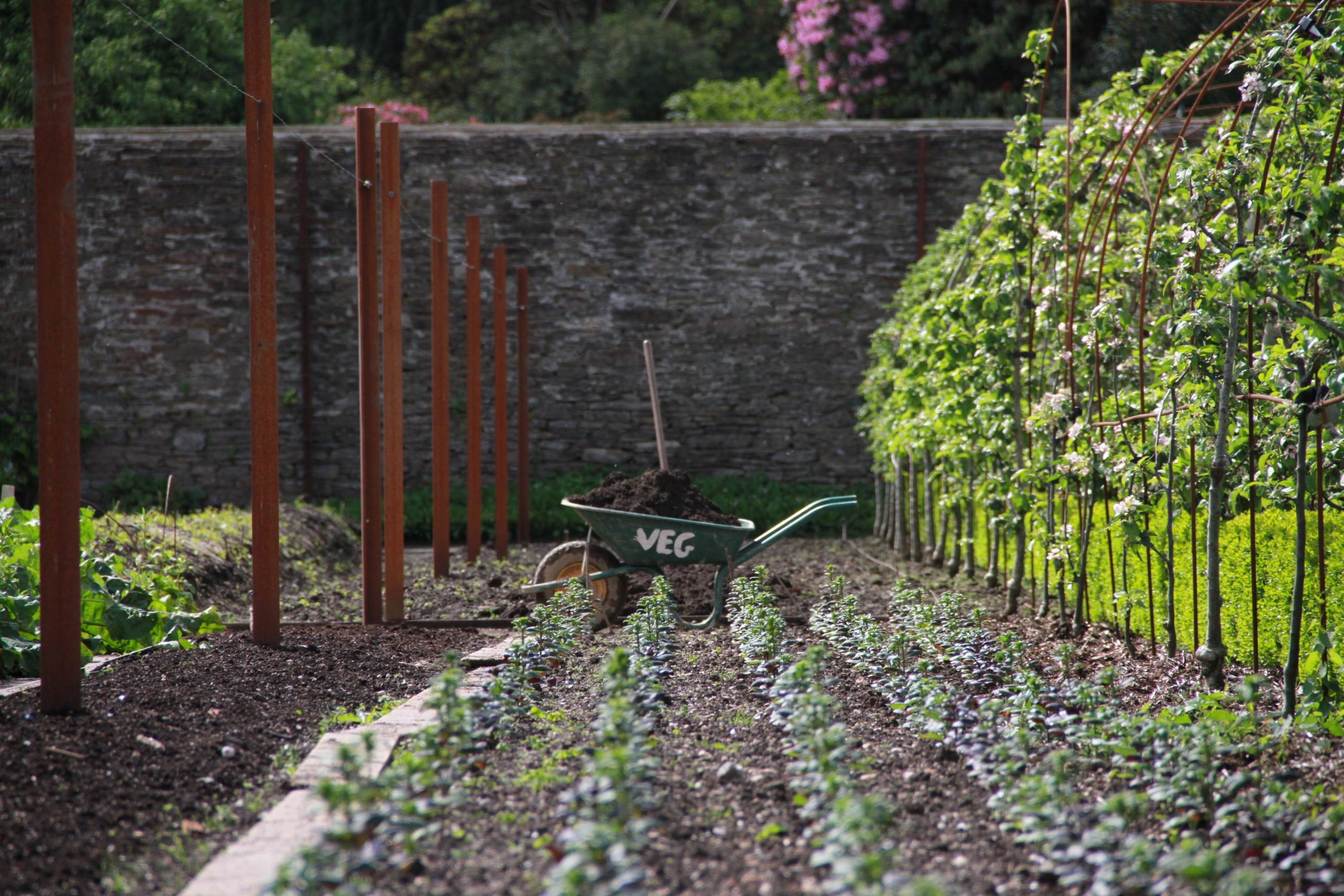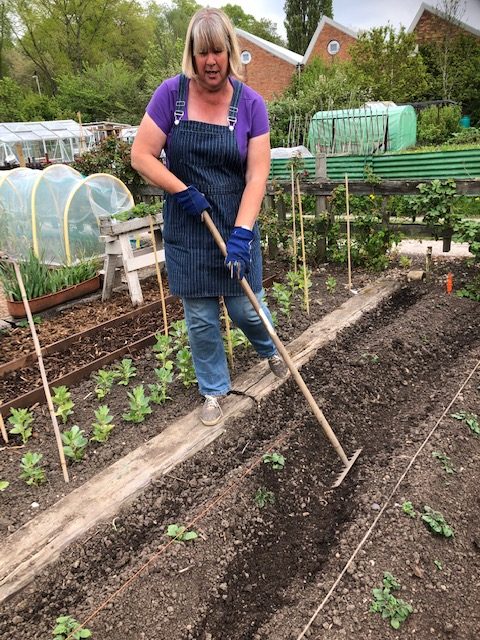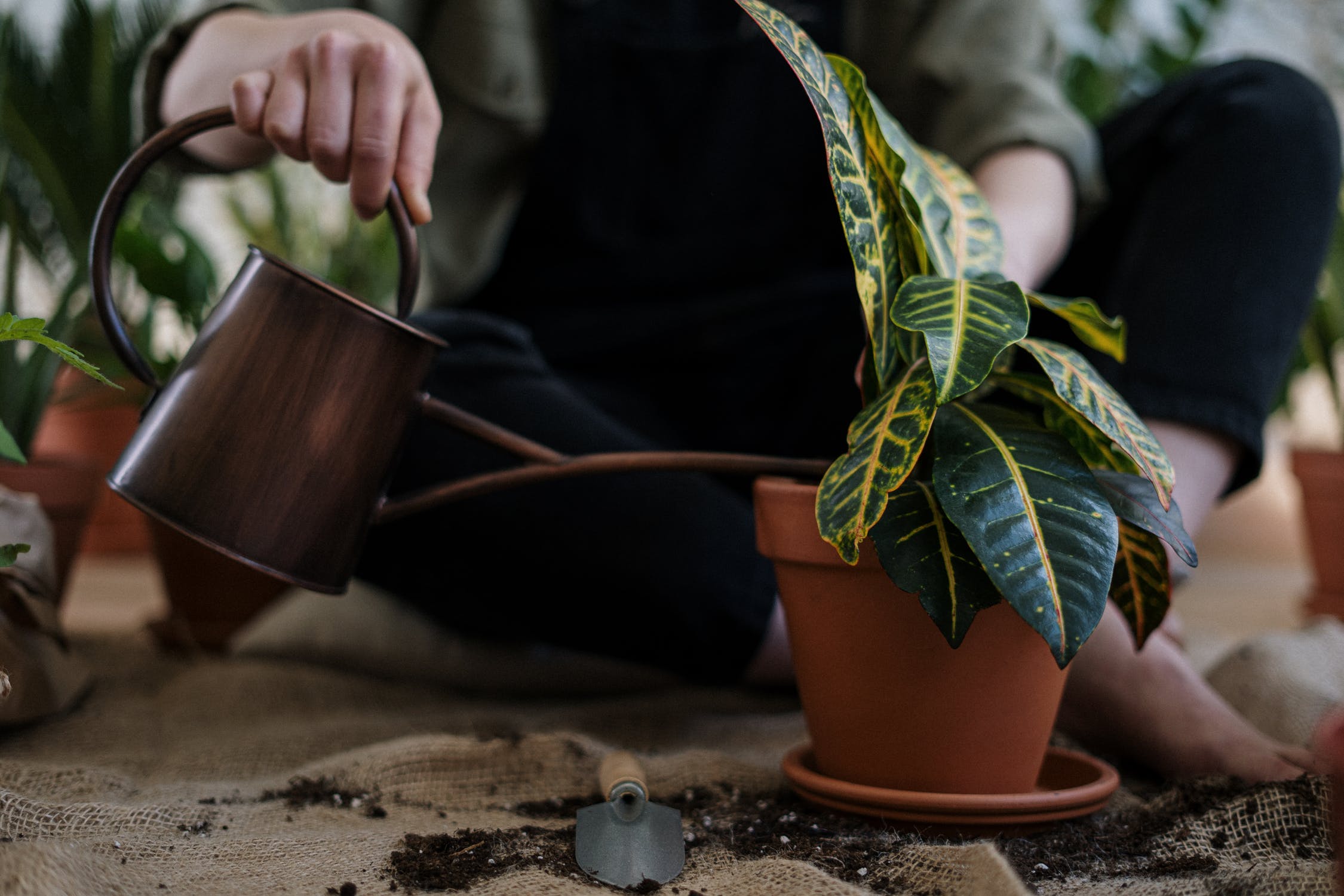April in the garden: sowing, tidying and potting on…

The ground is warming up, and the long hours of sunlight have arrived. Spring is finally here. In the garden you can expect to see tulips in bloom and wildlife return to their jobs amongst the flowers. There is plenty to keep you busy outside in April, and a few jobs to do indoors on the days interrupted by April Showers.
Plant Shallots
Shallots are a great alternative to onions, especially for cooking, so they’re well worth growing. You should plant them now in well-drained, fertile ground, with just the tip of the shallot bulb sticking out from the surface.
Soft Fruit
If you have soft fruit bushes, make sure that the ground around them is free of weeds, and ideally cover it with a good rich mulch. This will ensure a good crop in the summer.
Pond Work
This is a good time to do some pre-season pond tidying, but don’t do anything drastic like emptying, as there will be frog and toad spawn around already. In particular, aquatic plants, like perennials, need to be divided. Things like iris will probably benefit from you doing this once every three years or so.
Strawberries
Cover early strawberries with cloches after putting a covering of straw around the plants.
End of Frost Danger
Frost protection guards such as netlon can be removed now. Even if there is a frost, it will be minimal and continue for a very short time, so your established plants should be safe.
Sow Seed of Winter Veg
It’s always encouraging to think you’re keeping ahead in the garden, especially when things begin to hot up. This is the time to sow the seed of cabbage and other winter green vegetables outside, into a prepared seedbed, and thin the seedlings as they appear. They will not be ready for eating for many months’ time, but you’ll feel good being so organised.
Care for Roses
When shrub roses have a good showing of leaf, if you identify early signs of blackspot, mildew, or insect damage, then you may want to spray with a combined mixture that deals with all three. Early action pays dividends, as the treatment will be more effective, and will require a lighter application than later in summer, when the pest are strongly established.
Preparing Plants for Summer
This is a busy period for ‘potting on’ plants in the greenhouse that will be planted out from late-May. Argyranthemums and Felicias that you intend to transfer outside can be moved from pots to their outdoor containers, and then kept in the greenhouse for a few more weeks.
Winter Flowering Jasmine
Tidy yellow winter-flowering Jasminum nudiflorum after it has finished flowering, to avoid a bird’s-nest appearance, and to encourage new growth for next year.
Plant Those Perennials
The ground is warming up and long hours of sunlight have arrived, so it’s the ideal time to plant out perennials to fill gaps, or to begin a tub or container that you can add to with annuals. If you’re filling gaps try choosing some plants with good foliage – they’ll enhance the flowers around them.
Fuchsia Cuttings
Spray stock fuchsias with water to induce cuttings, which should be taken at this time of year.
Dead Head Hydrangeas
Dead head hydrangeas such as Hydrangea macrophylla, Hydrangea villosa and Hydrangea hortensia varieties, having left the old flower-heads from last year to protect the new growths which are susceptible to frost.
Evergreen Hedges
Clip evergreen hedges and specimens, such as golden privet, laurel and box.
Plant Potatoes
Planting potatoes is traditionally an Easter task, but it can be done at any time throughout April.

Newly sprouted potatoes growing through
French Beans
Sow some French bean seeds under cloches for an early crop; in all but the mildest areas it is not advisable to sow them outdoors until mid to late-April.
Feed Perennials
Emerging perennials such as peonies will benefit from a sprinkling of growmore, or similar general fertiliser.
Spring Prune Shrubs
Prune those shrubs that need cutting at this time of year, either to produce new growth for flowering, (e.g. buddleias), or to improve the shape and encourage fresh new foliage, (e.g. artemisias and caryopteris).

Trays of seedlings in glasshouses at Forde Abbey in April
Sow Seed of Winter Vegetables
Now the ground is beginning to warm up, provided it is not too wet, sow the seed of cabbage and other winter vegetables into a prepared seedbed outside, and thin seedlings as they appear.
Plant Gladioli Corms
Gladioli grow from corms which are like flattened bulbs. They should be planted now; 10cms deep in heavy, clay soil; 15cms deep in light, sandy soil. If you can sprinkle a layer of sharp sand immediately below the corm, this will help drainage.
Hardening Off Time
If you have grown annual bedding plants from seed in your greenhouse, the ones raised early will have produced plants that need hardening off now. They need to be put in a cold frame or somewhere similar, where they get outdoor conditions during the day, but protection at night. This prepares them for being planted out.
Veg Cropping
If your vegetable patch is small, consider intercropping some fast-growing summer vegetables such as salads, with slow growing ones that are planted or sown now for winter cropping. The salads will be picked before the winter cabbage and cauliflower need the extra space.
Asparagus
The best way to establish an asparagus bed is by buying one-year old crowns, which should be planted now, in a well-drained bed, prepared with plenty of rotted manure and compost. If your soil is heavy, grow asparagus in a raised bed. They should be ready for cropping two years later.
Lettuce Crops
Make a note that you will sow lettuce regularly, once a week or fortnight, to produce a constant supply throughout the summer. Using a half to a quarter of most seed packets each time produces an ample crop for a two-week supply.

Check Houseplants
Check houseplants, and re-pot into larger pots where necessary, especially if the foliage is looking tired.
Shape Shrubs
This is a good time to deal with established summer-flowering shrubs such as hebes, which require shaping every two or three years, rather than regular pruning.
Sow Radishes
Begin sowing radish seed into well-fertilised ground. Make sure the seedlings are well thinned; otherwise, growth goes into foliage rather than the roots.
Whitefly
Tackle whitefly in the greenhouse early by hanging up some sticky yellow cards. They’re ugly, but effective.
Sow New lawns
This is a good month to sowing a new lawn. Although the weather is still fairly cool, it is warm enough for grass seed to germinate, and to become established before the hot weather comes. Newly sown lawns may need watering if there are early-season dry spells.
Weed Attack
The soil has warmed up during the last couple of weeks, but as it is still moist, this serves to kick-start the weeds into growth. This is definitely the time to try and get on top of weeds, as by mid-summer they’re established, and you will be fighting a losing battle. So, use any spare moments to get out to tackle them now.
Plant Your Sweetcorn
If you like homegrown cobs – they’re so much better! – this is the time to be planting. You might have grown your own seedlings in which case they should be completely hardened off before you plant them out. Otherwise, you can buy young plants. Choose a site with the maximum warmth and sun and make sure the soil is well prepared with some organic food. You should set out the plants 30-40 cms apart. Plant in a block of short rows rather than one or two long rows, this encourages better pollination.


















